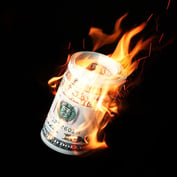Quick Take: Barry James considers a variety of factors — economic, monetary, and technical — when picking stocks and bonds for James Advantage Golden Rainbow Fund (GLRBX). The balanced fund manager’s key concern is preservation of capital. With stocks, James’ conservatism leads to high-quality value holdings; with bonds, it leads to more high-quality with intermediate-term durations, typically of five years.
Right now, James is cautiously optimistic since he believes presidential election years tend to help investments. As a result, he has boosted the fund’s equity weighting to about 53%, up from its usual 50%. James isn’t getting too aggressive, however, because he believes post-election years tend not to be good for the market.
James’ conservative approach has helped the fund, especially in value markets. For the five-year period through last month, the portfolio rose 6.1%, on average, versus a 2.1% for balanced funds. For the one-year period through last month, it was up 13.8%, versus a 10% gain for its peers.
The Full Interview:
S&P: What are the fund’s investment goals?
JAMES: Preservation of capital is a key objective. The fund is a conservative balanced offering. The equity holdings are among all market capitalizations, so we have large-, mid-, and small-cap stocks. We generally adjust equities in terms of market cap, sectors, or individual stocks. We consider durations and sectors for the fixed-income portion, which is high quality.
S&P: How do you determine the fund’s asset allocation?
JAMES: Each week, we analyze long-, intermediate-, and short-term indicators, such as economic trends, monetary trends, technical trends, and sentiment trends. We do all our own research, and revalidate the indicators every two years.
S&P: What is the current asset allocation?
JAMES: Now, the fund is about 53% to 54% equities, about 46% fixed income, and about 1% cash. Our intermediate-term picture is positive. The fund’s norm is about a 50% weighting in equities. We thought the market would pull back in the second quarter, which it did, and then our indicators improved, so we saw a buying opportunity.
S&P: Why have you become more optimistic?
JAMES: Typically, June, July, and August tend to be good, and election years also tend to be good. The year after elections is a different story, but now we see a rally lasting until the end of the elections. Generally, interest rate hikes aren’t good for stocks, but that makes virtually no difference in election years, according to our research.
S&P: Which areas in equities have you gone into recently?
JAMES: We have been buying more large-cap stocks because small-caps have had a nice run-up in the last few years.








 August 27, 2004 at 08:00 PM
August 27, 2004 at 08:00 PM










